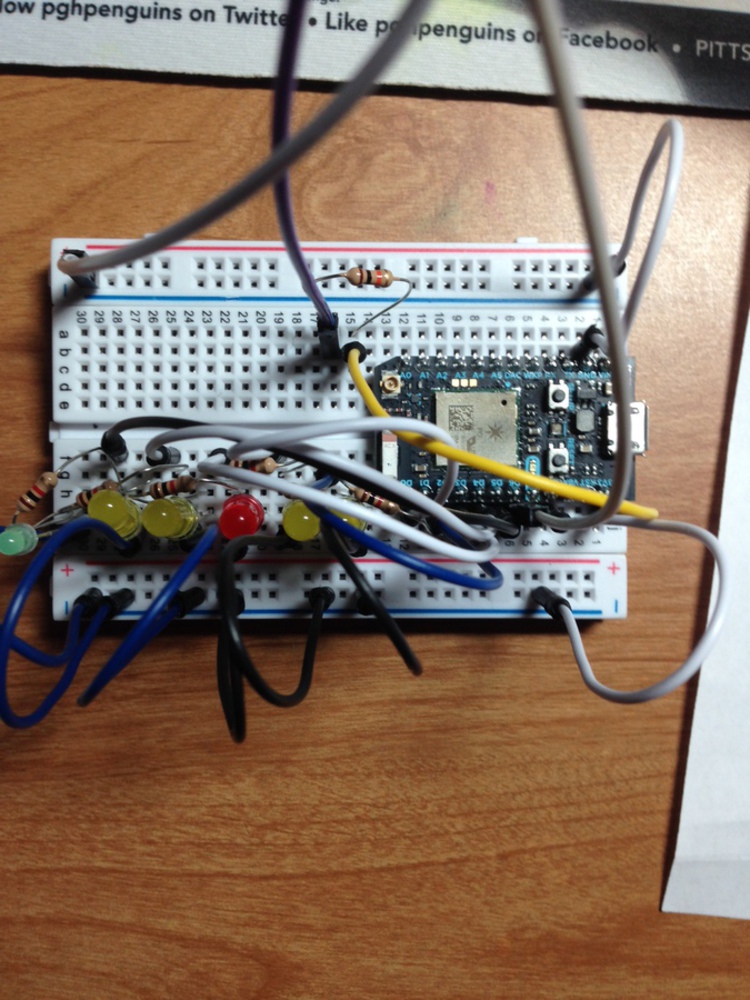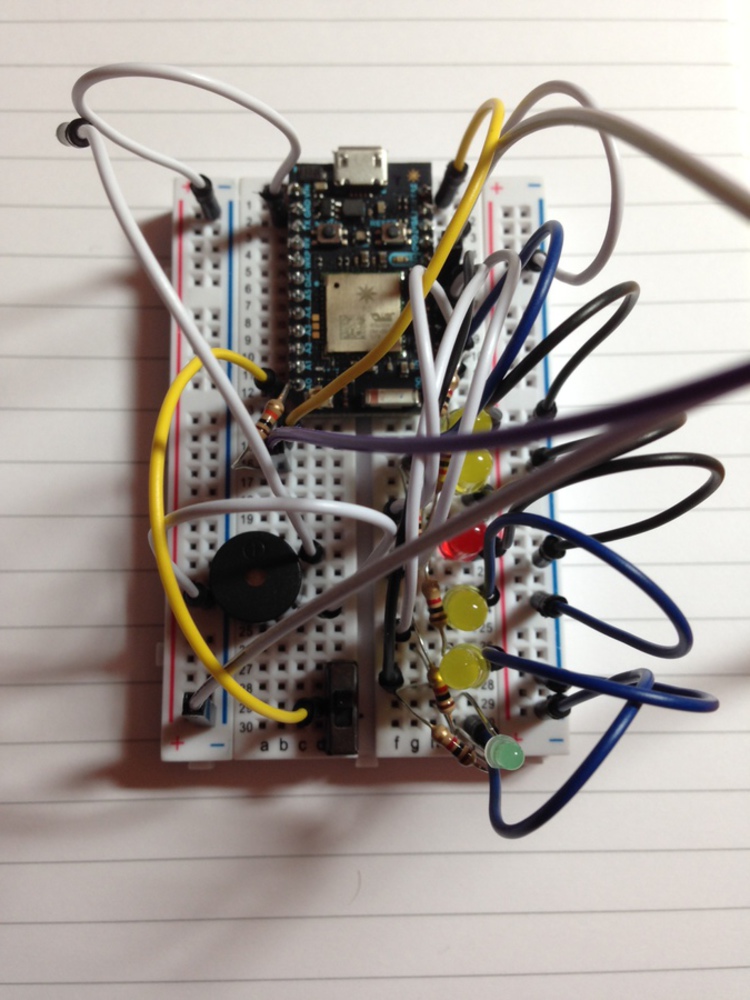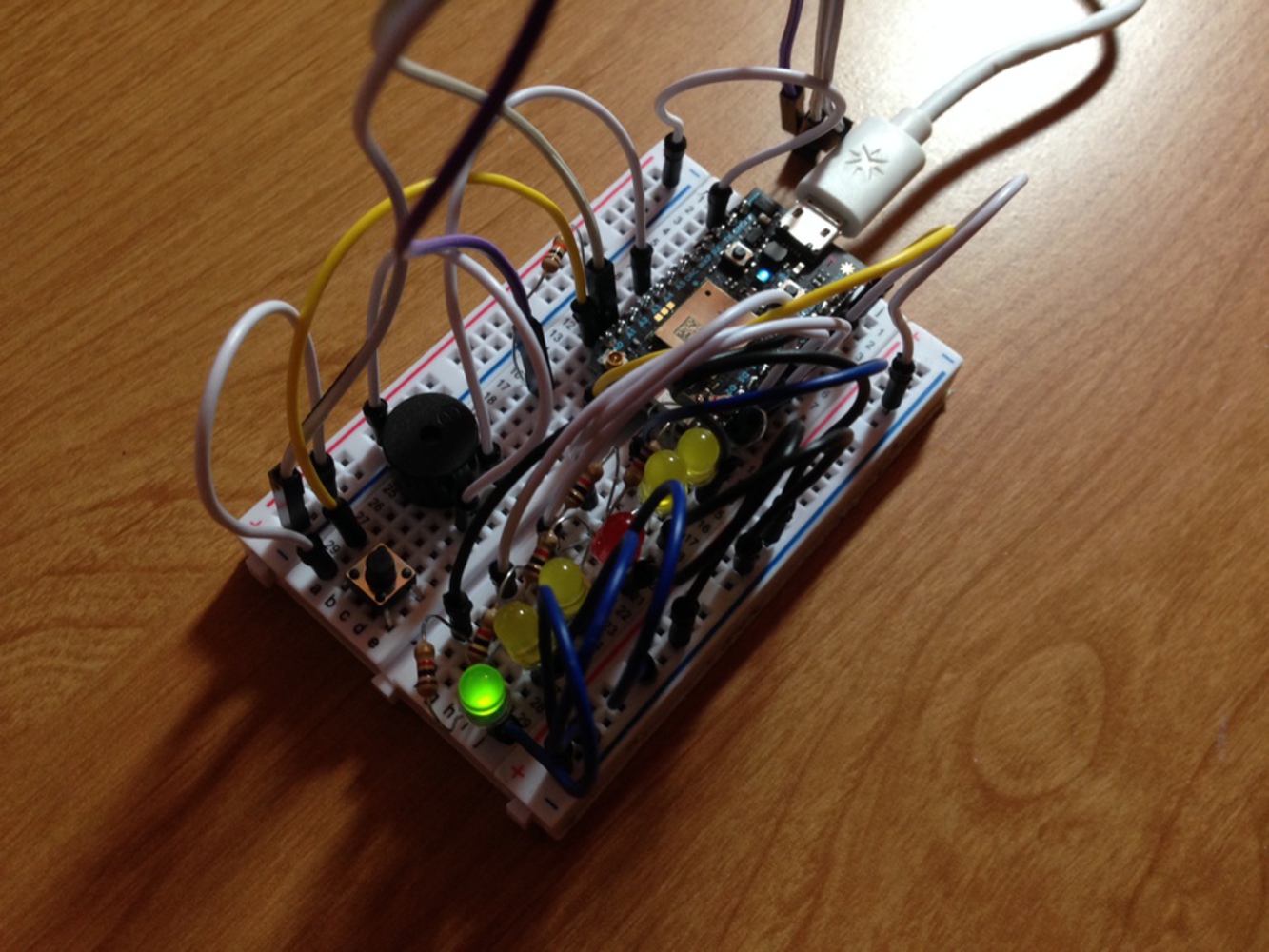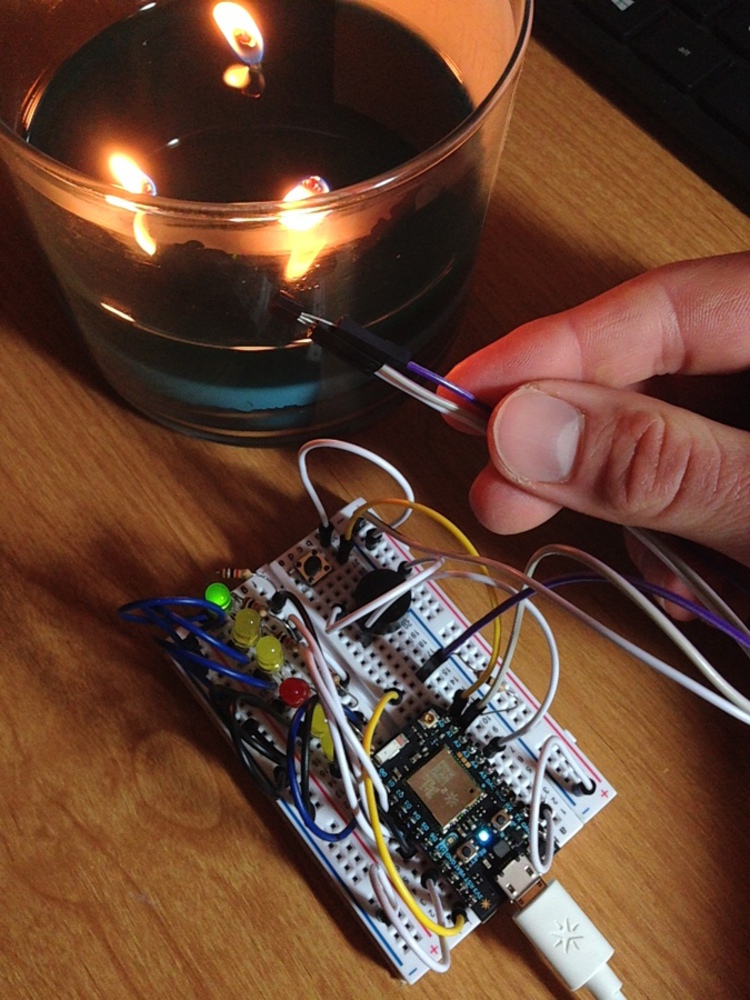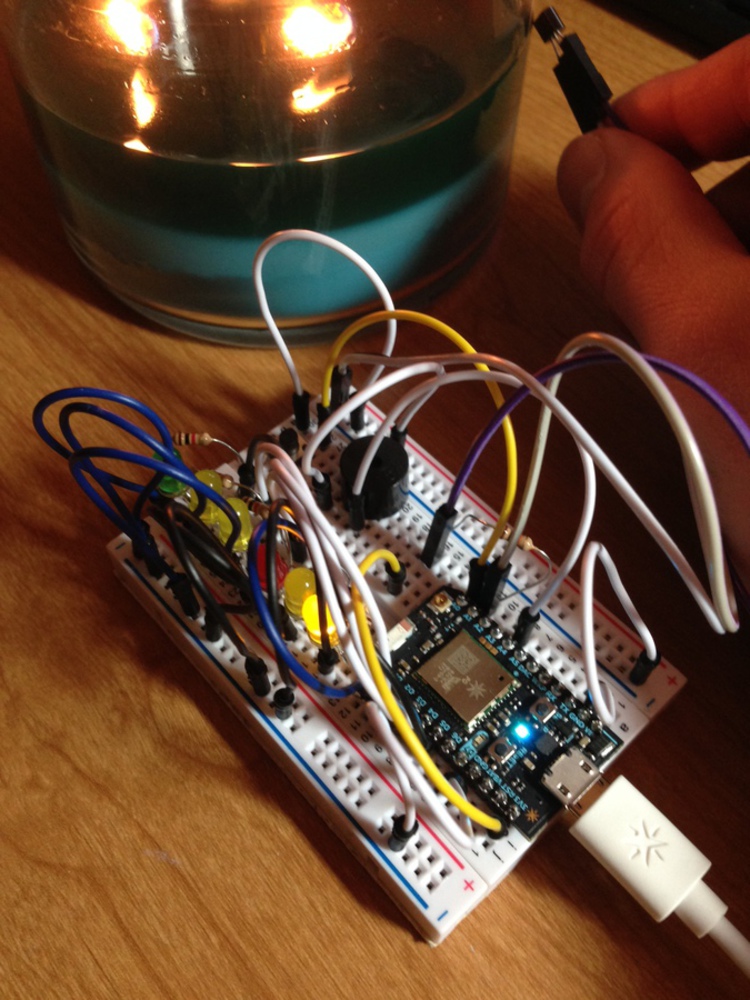Outcome
Process
Components:
5 – Yellow LED
6 – 1K Ohm Resistor
1 – 10K Ohm Resistor
1 – DS18B20 Temperature Sensor
1 – Piezo Buzzer
1 – Push Button
1 – Red LED
1 – Green LED
Male to female jumper wires
Jumper wires
In order to efficiently develop this project, I decided to wire and test individual components as I went along. Using tutorials from class and online sources referenced below, allowed me to make certain of component’s function before adding more components. Wiring a buzzer, push button, temperature sensor, and 6 LEDs became very difficult on such a small board. After wiring the LEDs, I should have realized that I needed to transfer to a larger board. In the future, I would also like to become more efficient with board layout. After the functionality of the components was verified, numerous resources were used to develop code that allowed all candle burning event criteria to be met.
Outcome:
The product works like this:
1. Attach the temperature sensor to side of candle
2. Set the hour in which the candle should not burn
3. Program checks the scenario criteria:
a. Glass temperature above room temperature and not “alarm hour” = SAFE STATE (green LED)
b. Glass temperature above room temperature and “alarm hour” = ALARM STATE (chasing yellow and red LEDs and buzzer)
c. Glass temperature below room temperature and not “alarm hour” = SAFE STATE (green LED)
4. If scenario B occurs, the push button is engaged to deactivate the alarm and reset the system to safe state.
Reflection
I am satisfied with the performance of this project. However, there are multiple functions that I would like to add if I were to continue to develop this idea. First, the addition of another temperature sensor would allow the program to read and input the ambient room temperature. Currently, I have to manually change the temperature value in the code. Second, the user should be able to control all of the functions from a mobile device. This includes setting the alarm time (currently manual) and also turning on the ringer and camera flash of the same mobile device. Finally, this product could also offer the user the ability extinguish the candle from their device. The candle lid could be retrofitted with a small servo that would rotate 90 deg to close.
References:
http://daraghbyrne.github.io/diotlabs/
https://www.arduino.cc/en/Tutorial/ForLoopIteration
https://docs.particle.io/reference/firmware/core/#timestr-
You can upload files of up to 20MB using this form.
